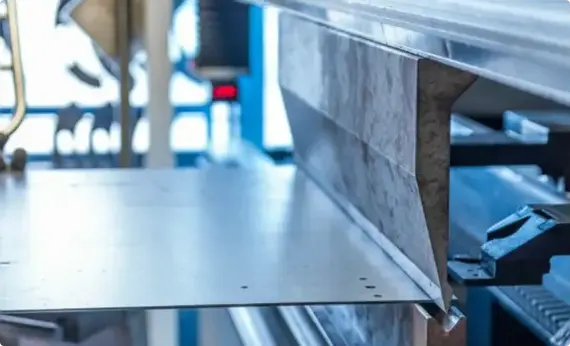
Detailed summary of the uses of 304L stainless steel
1. Main application areas Chemical industry Due to its good corrosion resistance, 304L stainless steel is often used to manufacture chemical reactors, storage t
1. Main application areas
Chemical industry
Due to its good corrosion resistance, 304L stainless steel is often used to manufacture chemical reactors, storage tanks, pipes and accessories to store and transport various chemicals. It can resist corrosion from a variety of organic and inorganic chemicals, such as nitric acid, acetic acid, phosphoric acid, etc.
Food processing and medical equipment
In the field of food processing, 304L stainless steel is used to manufacture food processing equipment, kitchen utensils, tableware and sinks, etc., because of its non-toxic, corrosion-resistant and easy-to-clean characteristics, it ensures the safety and hygiene of food. In terms of medical equipment, it is used to manufacture medical equipment, surgical instruments and artificial joints, etc., also thanks to its corrosion resistance and non-toxicity.
Building materials and decoration
304L stainless steel is also widely used in the field of building decoration, such as the manufacture of indoor and outdoor decorations such as doors and windows, handrails, railings, stairs, and components in building structures. Its beautiful, durable and easy-to-clean characteristics make it a preferred material in the construction field.
Marine Engineering
The corrosion and erosion of the marine environment have extremely high requirements for materials, and 304L stainless steel has been successfully used in the manufacture of ships, offshore platforms and marine engineering with its good corrosion resistance and oxidation resistance.
Automotive Industry
In the automotive industry, 304L stainless steel is used to manufacture key components such as automotive exhaust pipes, fuel pipes, gearboxes, turbines and turbine housings. Its good mechanical properties and corrosion resistance help to improve the life and use efficiency of automotive parts.
Pulp and Papermaking
304L stainless steel can also resist corrosion in the pulp and papermaking process, such as sulfates, chlorides, etc., so it can be used to make pulp tanks, bleaching tanks, papermaking machines and other equipment.
2. Material characteristics
Corrosion resistance: 304L stainless steel has excellent corrosion resistance and can resist corrosion from general chemical media such as atmosphere, water, acid, alkali and salt.
Mechanical properties: It has good strength, toughness and ductility, as well as good cold working properties.
Weldability: Due to its low carbon content (less than 0.03%), 304L stainless steel is more suitable for welding than 304 stainless steel because it can avoid intergranular corrosion after welding.
Processing performance: Easy to process, it can be processed by cold working, hot working, deep drawing and forming.
3. Other applications
Low temperature application: Due to its good impact toughness, 304L stainless steel is also commonly used in liquefied natural gas (LNG) and cryogenic liquid storage equipment.
High temperature resistance: Within a certain temperature range (higher than room temperature), 304L stainless steel can still maintain its corrosion resistance, so it can also be used in high temperature environments.
stainless steel processing
The manufacture of stainless steel involves a series of processes. First, the steel is melted, and then it is cast into solid form. After various forming steps, the steel is heat treated and then cleaned and polished to give it the desired finish. Next, it is packaged and sent to manufacturers, who weld and join the steel to produce the desired shapes.

Melting and Casting
The raw materials that constitute a stainless steel item are placed together and melted in a giant electric furnace. Intense heat is applied rigorously for a period of 8 to 12 hours during this step. Once the melting is complete, the molten steel is cast into desired semi-finished forms. Some of the most common forms or shapes include slabs, blooms (rectangular shapes), billets (these could either be round or square), rods, and tube rounds.

Forming
In the second stage, the semi-finished steel shapes undergo a series of forming operations. For instance, the stainless steel is hot rolled (heated and passed through enormous rolls). The blooms and billets mentioned above are converted to bar and wire. The slabs on the other hand are formed into plates, strips or sheets. It is very common to turn semi-finished steel shapes into bars, as it is the most versatile stainless steel form (it comes in all grades and sizes). You have round, square, octagonal, and hexagonal bars, each suitable for a different type of application.

Heat Treatment
The various stainless steel forms undergo a thorough annealing process during this step. Annealing is another name for heat treatment where the stainless steel is heated and cooled in a controlled environment. The purpose of this heat treatment is to relieve the pent-up stress inside the stainless steel and soften the material to make it more suitable for a wide variety of applications. The people in charge of carrying out the annealing process have to be very careful about the conditions as even the slightest of changes in the temperature, pressure, duration, or cooling rate could result in a faulty product.

Descaling
During the annealing process, a certain amount of scale appears on the surface of the stainless steel. This scale can be removed using a number of different processes that are collectively known as descaling. Pickling is one of the more common methods of carrying out the descaling process.

Cutting
The semi-finished, heat-treated, and descaled stainless steel forms are cut into specific shapes in this step. Mechanical cutting is performed with the aid of guillotine knives, blanking, nibbling, and high-speed blades.

Finishing
Finishing is applied to help the stainless steel product achieve its signature aesthetically appealing appearance. Finishes are also needed to make the stainless steel product smooth and easier to clean, which is a top requirement in sanitary applications.
